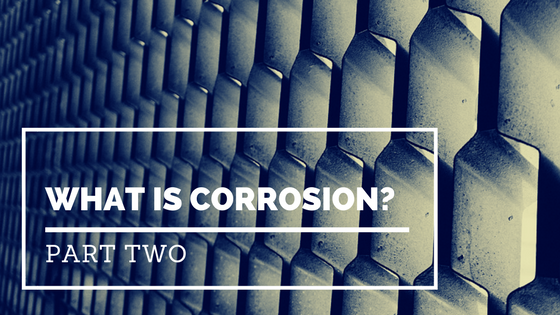
This blog originally appeared on Robert Heidersbach's website here.
---
As an engineer, forensic consultant, author and former professor, I often get the question: What is corrosion?
I addressed this and more in my previous blog, “What Is Corrosion? Part One.” To provide you with a reminder about what corrosion is, the Kennedy Space Center defines it as the deterioration of a material over time due to a chemical reaction with the environment. Corrosion usually affects metal because these synthetic materials are naturally unstable in the environment — and it can affect anyone from bridge builders to fine jewelry owners.
It’s hard to believe, but there are 15 forms of corrosion. My previous blog only covered three types of corrosion (uniform corrosion, galvanic corrosion, and concentration cell corrosion), but this blog will delve into an additional three: pitting corrosion, crevice corrosion, and filiform corrosion.
Pitting corrosion forms at random in bubbles called pits, which can take the shape of a wide, but shallow bubble, or a narrow, but undercutting bubble that delves deep under the material’s surface. Additional types of pitting corrosion are listed on the National Association of Corrosion Engineers’ website.
Pits are more likely to form when chloride ions mix with oxygen or oxidizing salts. According to researchers, the environment inside pits is more acidic, and it has a higher concentration of chloride ions compared to its external environment. Overall, this leads to an increased corrosion attack inside the pits, where the material is destroyed from the inside out. To understand pitting corrosion in layman’s terms, you can think about how a tooth cavity forms, and how it destroys the tooth from the inside out if the issue isn’t addressed in the appropriate amount of time.
Crevice corrosion is exactly how it sounds — it occurs in tight and/or small crevices between the contact point of two metals or nonmetals. You may find crevice corrosion between washers, screws, fasteners, sand grains where the ocean floor meets a supportive bridge beam, or under applied protective films.
Crevice corrosion can be inevitable. However, you can ward it off by maintaining cleanliness and applying sealants to keep the problem at bay.
Filiform corrosion occurs under painted surfaces when moisture from the air permeates the protective coating. Normally you would think that if surfaces are properly prepared and painted, then they should be protected from corrosion, right?
If the paint surface isn’t properly prepared or a wrong type of paint is used, this could be the root of the problem. Before paint is applied, the surface should be coated with a protectant that has low water vapor transmission characteristics, excellent adhesion, and minimizes holes. Then, an approved paint can be applied next. A lacquer or a “quick-dry” paint should be avoided.
Stay tuned for “What is Corrosion? Part Three”

